Coronavirus: what the lockdown could mean for wildlife
- Mel
- Global Moderator
- Posts: 28224
- Joined: Sat May 19, 2012 12:31 pm
- Country: Germany
- Location: Föhr
- Contact:
Re: Coronavirus: what the lockdown could mean for wildlife
But there is a silver lining - it seems that zoos and animal parks are allowed to open again from Monday onwards 
God put me on earth to accomplish a certain amount of things. Right now I'm so far behind that I'll never die.
- Lisbeth
- Site Admin
- Posts: 67398
- Joined: Sat May 19, 2012 12:31 pm
- Country: Switzerland
- Location: Lugano
- Contact:
Re: Coronavirus: what the lockdown could mean for wildlife
Like the schools 

"Education is the most powerful weapon which you can use to change the world." Nelson Mandela
The desire for equality must never exceed the demands of knowledge
The desire for equality must never exceed the demands of knowledge
- Mel
- Global Moderator
- Posts: 28224
- Joined: Sat May 19, 2012 12:31 pm
- Country: Germany
- Location: Föhr
- Contact:
Re: Coronavirus: what the lockdown could mean for wildlife
Well it's a zoo of some sorts as well, isn't it 
God put me on earth to accomplish a certain amount of things. Right now I'm so far behind that I'll never die.
- Lisbeth
- Site Admin
- Posts: 67398
- Joined: Sat May 19, 2012 12:31 pm
- Country: Switzerland
- Location: Lugano
- Contact:
Re: Coronavirus: what the lockdown could mean for wildlife
From what you and others tell, it certainly is 
"Education is the most powerful weapon which you can use to change the world." Nelson Mandela
The desire for equality must never exceed the demands of knowledge
The desire for equality must never exceed the demands of knowledge
- Lisbeth
- Site Admin
- Posts: 67398
- Joined: Sat May 19, 2012 12:31 pm
- Country: Switzerland
- Location: Lugano
- Contact:
Re: Coronavirus: what the lockdown could mean for wildlife
Wild lockdown: Caracal spotted on Cape streets
May 14, 2020, 10:28 AM
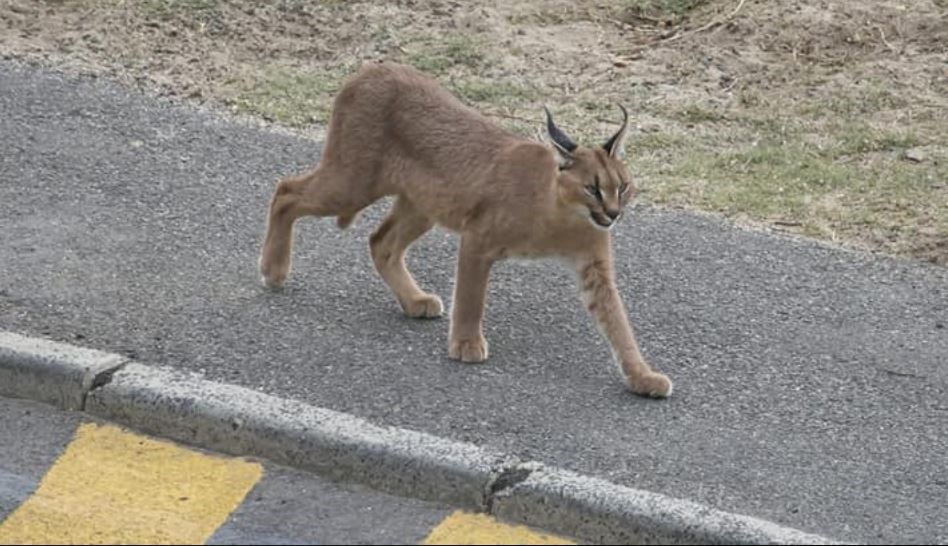
A caracal spotted on Simon's Town streets this week. Photo: Yolandé Oelsen
- A caracal is roaming the streets of a Simon's Town suburb.
- It is one of only an estimated 50 in the entire Cape peninsula.
- Caracals are the largest remaining predator in the Cape Town area, and are thought to play a vital role in maintaining its ecosystem balance.
Typically elusive, a caracal - also known as a “rooikat” or “lynx” – has been roaming the roads of suburban Simon’s Town, near Cape Town, during lockdown.
Simon’s Town is currently a wildlife hotspot, with penguins also wandering its streets in recent weeks.
An experienced SA safari guide freaked out at seeing a lioness carry a cub during a live stream
Resident Yolandé Oelsen, who lives in the Murdoch Valley suburb of Simon’s Town, spotted the caracal on Tuesday, early afternoon, on Main Road. She was on the look out for the wild cats from her home balcony, after neighbours’ reported sightings of a caracal.
“I suddenly saw the cat walking down the road – not at all perturbed by cars passing by.” It headed to the sea, across the road, where it scrambling over rocks and tried (unsuccessfully) to catch dassies.
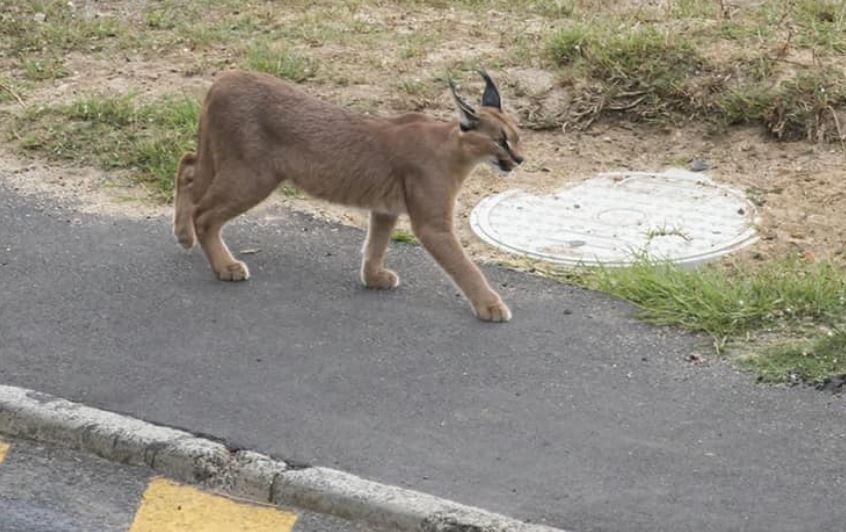
Photo: Yolandé Oelsen
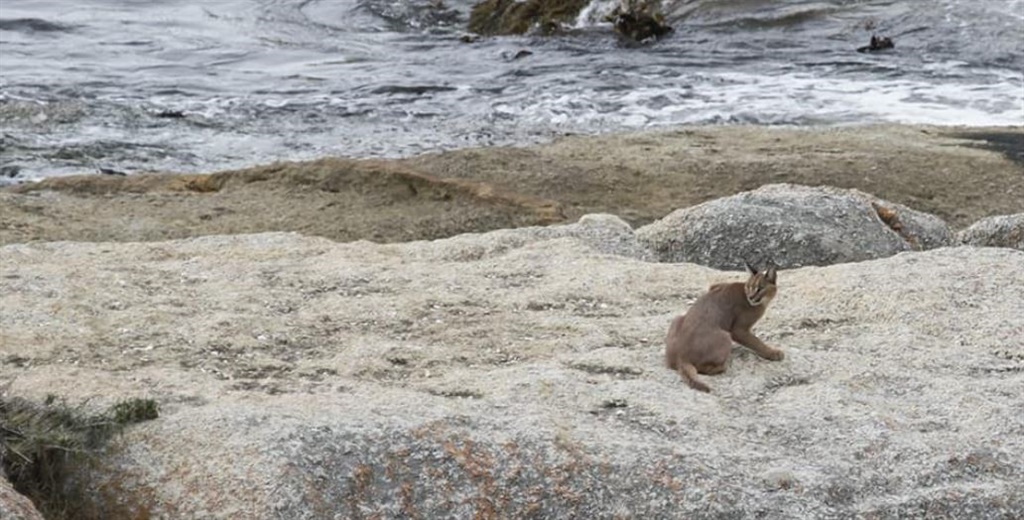
Photo: Yolandé Oelsen
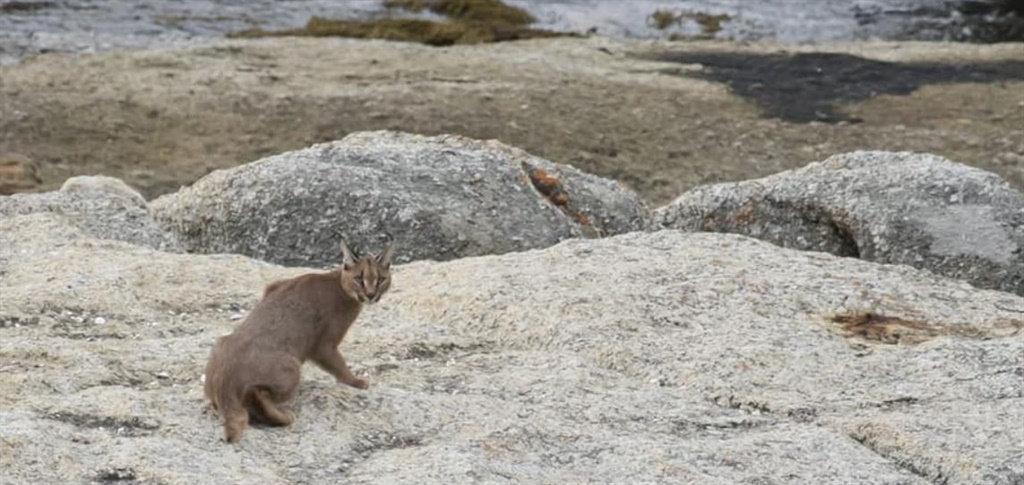
Photo: Yolandé Oelsen
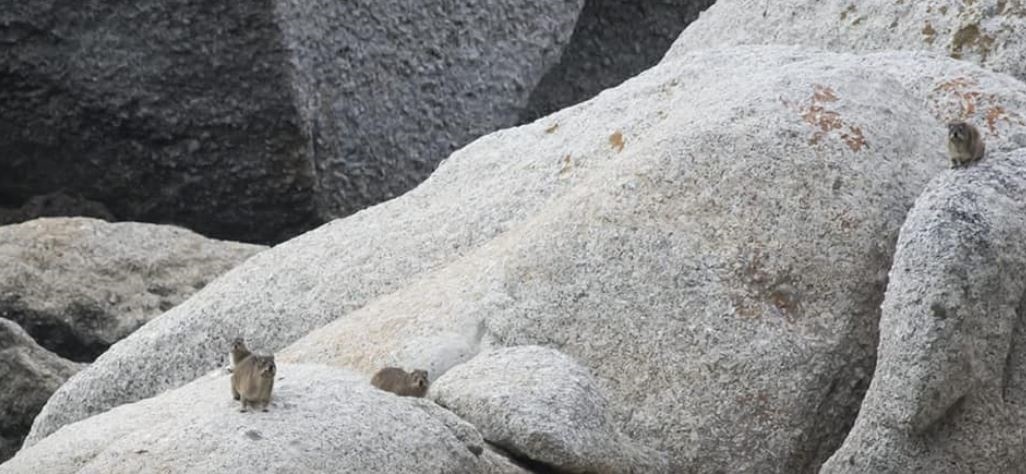
Dassies made a lucky escape from the caracal. Photo: Yolandé Oelsen
The cat eventually disappeared in the bushes, but Oelsen returned to her lookout at around 17:00, which is peak caracal-spotting time in the neighbourhood. Caracals are nocturnal animals, but will use twilight hours to search for prey.
They found the caracal right outside their house, catching the last rays of the afternoon sun. The cat then proceeded to walk back on the road, through the neighbourhood and disappeared into the valley, Oelsen said.
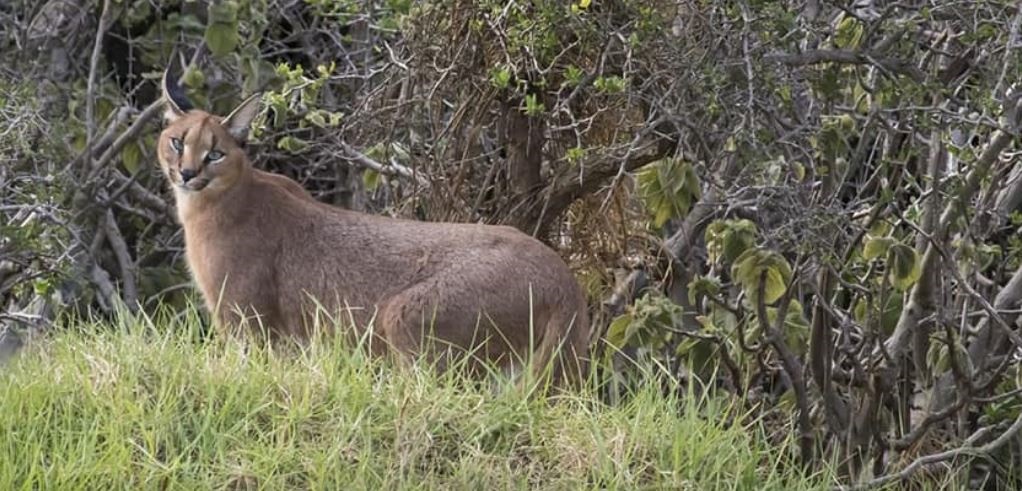
Photo: Yolandé Oelsen
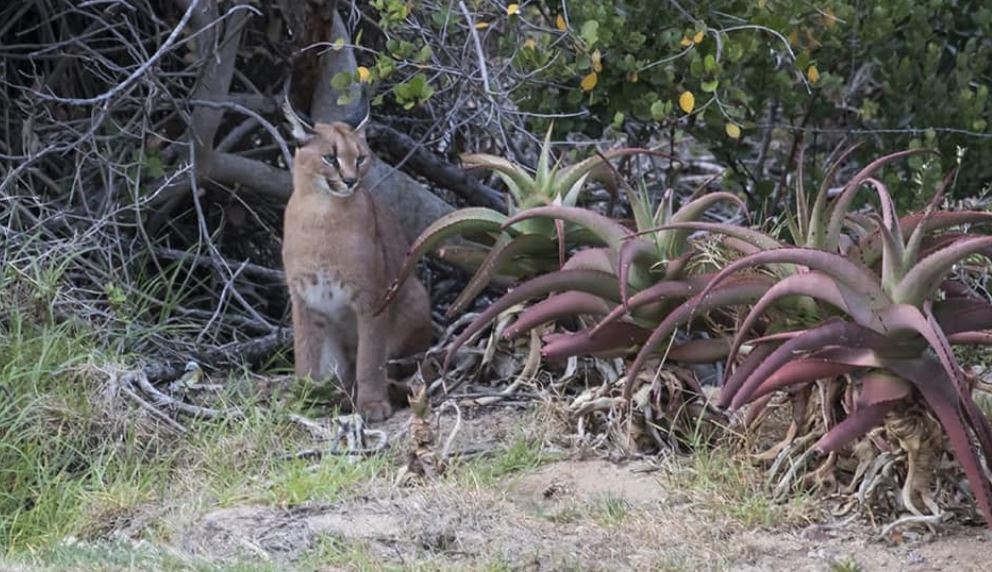
Photo: Yolandé Oelsen
According to Dr. Laurel Serieys, founder of the Urban Caracal Project in Cape Town, there may be around 50 caracals across the Cape Peninsula. The project has tagged some of the local caracals for monitoring purposes. They found that one young male caracal moved from Rhodes Memorial in Cape Town to Cape Point – a distance of around 65km - in a matter of weeks, she told People’s Post
Caracals are the largest remaining predator in the Cape Town area, and are thought to play a vital role in maintaining its ecosystem balance.
Adult caracals are slender cats which typically reach a height of around 78cm, and weigh around 12kg. Serieys says caracals would usually not attack humans, but you can expect a loud hiss or spitting.
May 14, 2020, 10:28 AM

A caracal spotted on Simon's Town streets this week. Photo: Yolandé Oelsen
- A caracal is roaming the streets of a Simon's Town suburb.
- It is one of only an estimated 50 in the entire Cape peninsula.
- Caracals are the largest remaining predator in the Cape Town area, and are thought to play a vital role in maintaining its ecosystem balance.
Typically elusive, a caracal - also known as a “rooikat” or “lynx” – has been roaming the roads of suburban Simon’s Town, near Cape Town, during lockdown.
Simon’s Town is currently a wildlife hotspot, with penguins also wandering its streets in recent weeks.
An experienced SA safari guide freaked out at seeing a lioness carry a cub during a live stream
Resident Yolandé Oelsen, who lives in the Murdoch Valley suburb of Simon’s Town, spotted the caracal on Tuesday, early afternoon, on Main Road. She was on the look out for the wild cats from her home balcony, after neighbours’ reported sightings of a caracal.
“I suddenly saw the cat walking down the road – not at all perturbed by cars passing by.” It headed to the sea, across the road, where it scrambling over rocks and tried (unsuccessfully) to catch dassies.

Photo: Yolandé Oelsen

Photo: Yolandé Oelsen

Photo: Yolandé Oelsen

Dassies made a lucky escape from the caracal. Photo: Yolandé Oelsen
The cat eventually disappeared in the bushes, but Oelsen returned to her lookout at around 17:00, which is peak caracal-spotting time in the neighbourhood. Caracals are nocturnal animals, but will use twilight hours to search for prey.
They found the caracal right outside their house, catching the last rays of the afternoon sun. The cat then proceeded to walk back on the road, through the neighbourhood and disappeared into the valley, Oelsen said.

Photo: Yolandé Oelsen

Photo: Yolandé Oelsen
According to Dr. Laurel Serieys, founder of the Urban Caracal Project in Cape Town, there may be around 50 caracals across the Cape Peninsula. The project has tagged some of the local caracals for monitoring purposes. They found that one young male caracal moved from Rhodes Memorial in Cape Town to Cape Point – a distance of around 65km - in a matter of weeks, she told People’s Post
Caracals are the largest remaining predator in the Cape Town area, and are thought to play a vital role in maintaining its ecosystem balance.
Adult caracals are slender cats which typically reach a height of around 78cm, and weigh around 12kg. Serieys says caracals would usually not attack humans, but you can expect a loud hiss or spitting.
"Education is the most powerful weapon which you can use to change the world." Nelson Mandela
The desire for equality must never exceed the demands of knowledge
The desire for equality must never exceed the demands of knowledge


